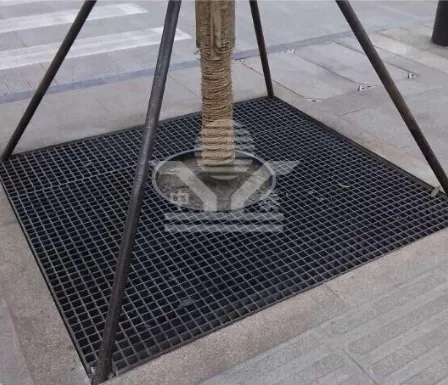Understanding Expanded Metal Functionality, Applications, and Benefits
Expanded metal, often referred to as mesh, is a unique material created by taking a flat sheet of metal and slitting and stretching it into a mesh pattern. This process results in a strong, lightweight, and versatile product that has a myriad of applications across various industries. Its distinct characteristics and benefits make it an ideal choice for architects, engineers, and manufacturers alike.
What is Expanded Metal?
Expanded metal is formed from a base metal sheet, typically made of materials such as aluminum, steel, or stainless steel. The manufacturing process involves either mechanical or hydraulic methods to cut the sheet into specific patterns and then stretch it to create openings of predetermined sizes. The result is a mesh that maintains a rigid structure while allowing for airflow, light, and drainage. The dimensions of the mesh can vary depending on its intended application, and it can be produced in various thicknesses, enabling a wide range of customization options.
Characteristics of Expanded Metal
One of the fundamental characteristics of expanded metal is its durability. Unlike woven or welded wire mesh, expanded metal maintains its structural integrity as it is one continuous piece, preventing any risks of collapse or malfunction due to loosening of connections. The inherent strength of the material makes it resistant to impact and deformation, making it suitable for high-traffic areas or harsh environments.
Another notable feature is its lightweight nature. Unlike solid sheets of metal, expanded metal retains strength while significantly reducing weight, which can be crucial for applications where reducing load is a priority, such as in construction and transportation.
Moreover, the open design of expanded metal provides excellent ventilation and drainage capabilities. This feature is especially useful in applications where airflow or water drainage is critical, such as in roofing, flooring, and platforms. The mesh allows for liquid and air to pass through, preventing the accumulation of moisture and reducing the risk of mold and corrosion.
Applications of Expanded Metal
mesh expanded metal

The versatility of expanded metal leads to its widespread use across various industries. In construction, its strength-to-weight ratio makes it ideal for wall panels, ceilings, platforms, and protective barriers. Due to its excellent slip-resistance properties, expanded metal is often employed in flooring applications, especially in industrial settings where safety is paramount.
In architecture, expanded metal is used for aesthetic purposes as well, allowing designers to create visually appealing facades, sunshades, and screens that provide both beauty and functionality. The material can be finished in numerous ways, including powder coating and painting, to match the design needs.
Expanded metal is also significantly applied in manufacturing and engineering contexts. It is commonly used for filtration systems, grates, and baskets, where strength and flexibility are required. Additionally, its ability to bear loads while remaining lightweight makes it an attractive option for various transport and logistics solutions.
Benefits of Using Expanded Metal
One of the primary benefits of using expanded metal is its cost-effectiveness. The manufacturing process allows for efficient use of materials, leading to competitively priced products. Its durability and resilience also contribute to long-term savings, as it often requires minimal maintenance and replacement over extended periods.
The sustainability aspect of expanded metal cannot be overlooked either. Many manufacturers produce expanded metal from recycled materials or through eco-friendly methods, aligning with modern sustainability practices. Furthermore, its long lifespan minimizes the need for replacement, reducing waste over time.
Conclusion
In conclusion, expanded metal, or mesh, is a highly effective and versatile material that offers a wide range of functionalities and benefits. Its unique manufacturing process yields a strong and lightweight product that finds applications in construction, architecture, manufacturing, and more. With its remarkable durability, cost-effectiveness, and aesthetic appeal, expanded metal continues to be a preferred choice across various industries. Whether used for functional or decorative purposes, its ability to meet the demands of modern design and engineering makes it an invaluable asset in today's material landscape.
-
The Best Metal Mesh Solutions: Expanded Aluminum Metal vs. Expanded Stainless Steel Metal
NewsSep.10,2024
-
Round Perforated Sheets vs. Hexagonal Perforated Sheets vs. Embossed Perforated Sheet Metal
NewsSep.10,2024
-
Perforated Metal Sheets
NewsSep.10,2024
-
Experience The Excellence Of Stainless Steel Grating
NewsSep.10,2024
-
Discover the Versatility Of Metal Mesh Expanded Forming Machines
NewsSep.10,2024
-
Discover The Advantages Of Steel Grating For Sale
NewsSep.10,2024
Subscribe now!
Stay up to date with the latest on Fry Steeland industry news.

